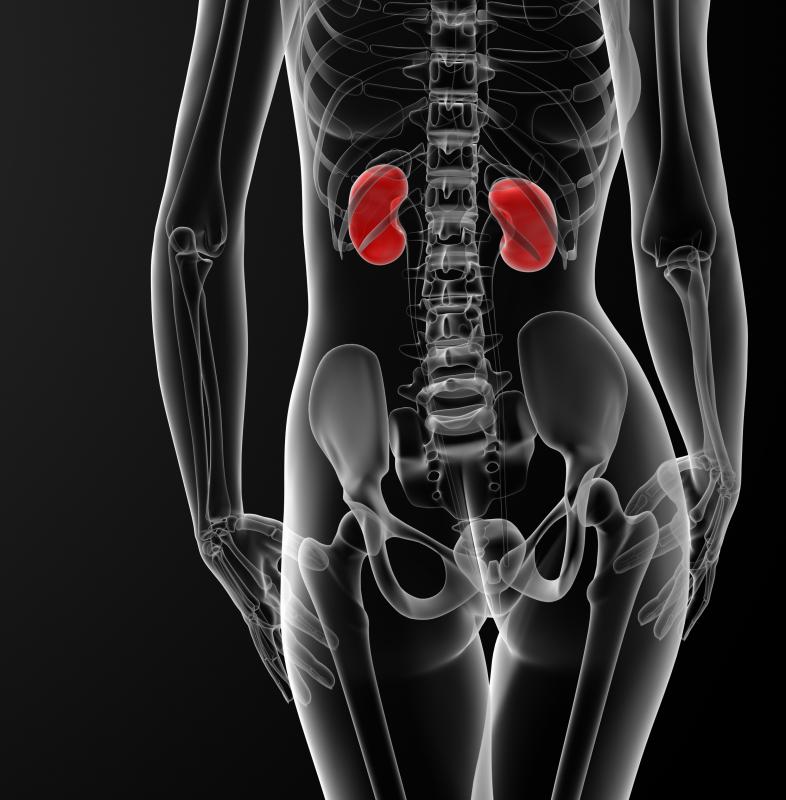At TheHealthBoard, we're committed to delivering accurate, trustworthy information. Our expert-authored content is rigorously fact-checked and sourced from credible authorities. Discover how we uphold the highest standards in providing you with reliable knowledge.
What Are the Pharmacokinetics of Diclofenac?
The pharmacokinetics of diclofenac describes the absorption, metabolism, and excretion processes occurring in the body after the drug is administered. Relevant information includes whether or not patients take the medication with food and the biotransformation the substance undergoes as part of the metabolic process. The kidneys and liver generally eliminate substances from the body, and data on the pharmacokinetics of diclofenac provides details as to which organ assumes primary responsibility for excretion and what medical conditions may hinder the process.
The rate at which the drug is absorbed following it's administration is one aspect of pharmacokinetics of diclofenac. The rate differs depending on whether a patient receives the drug by intravenous administration, intramuscular injection, or oral tablet form, and medication levels typically increase the fastest following intravenous administration. Physicians suggest taking the oral form of the medication with food. Although this action slows the absorption process, it minimizes gastric distress while still allowing the body to fully absorbs the medication.

Once absorbed, the body metabolizes, or breaks down the compound into metabolites and conjugates. These substances generally bind to proteins, particularly albumin. The pharmacokinetics of diclofenac includes the distribution of the drug, in which the proteins carry the medication through the blood and into various bodily tissues. Through a diffusion process, diclofenac enters tissues that contain little to none of the drug. When tissue levels of the medication exceed levels in the bloodstream or the extracellular spaces, proteins carry the medication out of the tissues.

The pharmacokinetics of diclofenac also include excretion. The kidneys eliminate two-thirds of the medication from the body while the other third binds with bile and leaves the body through the bowels. Patients diagnosed with renal malfunction cannot effectively excrete the medication, which can lead to renal toxicity. Patients with heart, kidney, or liver impairment may require dose adjustments or a reduction in the treatment time frame. Patients who take diuretics or angiotenson converting enzyme (ACE) inhibitors may also experience adverse effects.

Diclofenac is a non-steroidal anti-inflammatory drug (NSAID) group. Pharmacists classify it as a cyclo-oxyenase (COX) inhibitor that primarily deals with the COX 1 and COX 2 prostaglandins. Its uses include relief of pain, inflammation, and fever. Physicians prescribe the medication for mild to moderate pain, including pain caused by osteoarthritis and traumatic injury. Women might take the compound for the relief of painful menstruation.

Aspirin, cyclosporine, and methotrexate may interact with diclofenac as it inhibits or potentiates the effects of these and other medications. Studies indicate that patients taking the substance may be at greater risk for developing blood clots, leading to heart attacks or strokes. Patients taking diclofenac are also typically more likely to experience gastrointestinal ulceration and bleeding.
AS FEATURED ON:
AS FEATURED ON:

















Discuss this Article
Post your comments